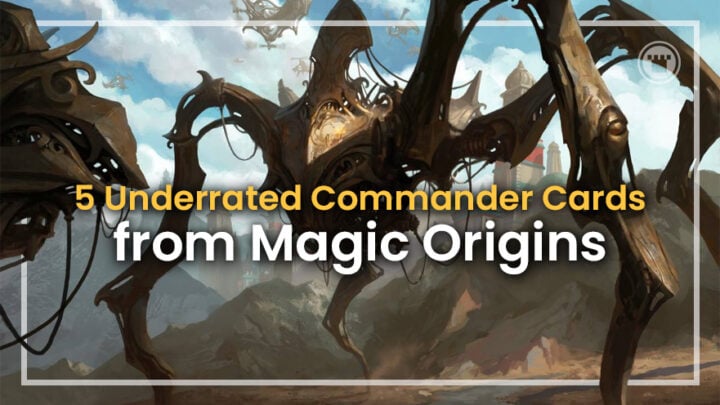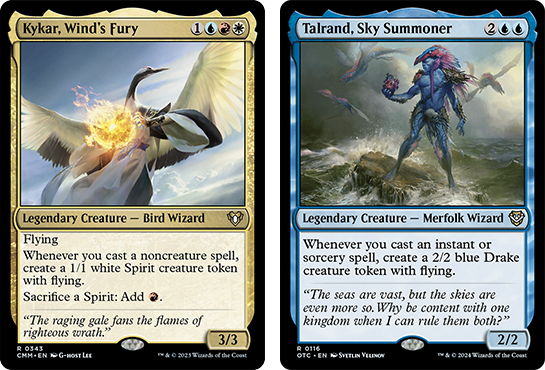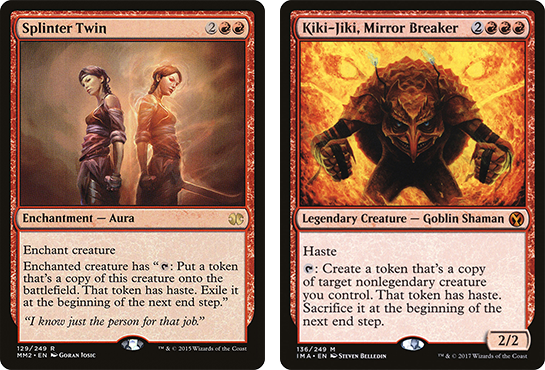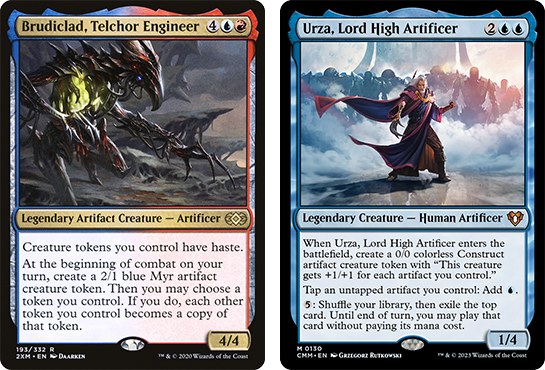Magic’s next standard release is Foundations. Preview season begins later this week and it releases on November 15th. It’s the first time we’ve seen a core set in four years. If you want a deep dive on core sets and their history, I wrote an article about that last week. Suffice it to say that core sets are beginner products that have simpler card designs and more reprints than your typical Standard-release set.
2015’s Magic Origins is a great example of a powerful core set. Jace, Vryn’s Prodigy and Hangarback Walker were not only heavily played in Standard, but have impacted all of the non-rotating 60-card formats too. And they are both also very well known to Commander players.
However, there are plenty of cards in Magic Origins that are underplayed. In this article, I’ll take a look at 5 cards from the set that should be more heavily played than they currently are.
WOODLAND BELLOWER
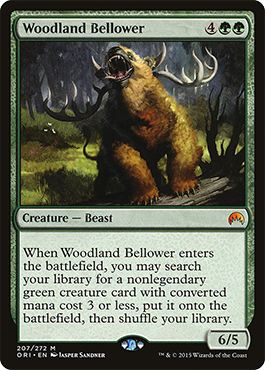
Played in 1% of Green Decks on EDHRec
Most of the cards I write about in this article series see way less play than the Bellower does, but I think it’s a travesty that he’s only being played in 1% of all Green decks. He’s too powerful to be overlooked.
Woodland Bellower is a bit unusual in that it lets you tutor a creature directly to the battlefield. It’s impossible not to feel like you’re getting a good investment for your mana with Woodland Bellower since you’re going to get this 6/5 and a cheap Green creature from your deck that is ideal for whatever situation you’re in.
It also helps that there are lots of interesting targets for the Bellower, including Green staples like Eternal Witness, Reclamation Sage, and Tireless Provisioner. In other words, Green decks will virtually always have something great to search up.
Basically if you’re playing a deck with lots of Green creatures in it the Bellower can tutor up, you should be playing Woodland Bellower. Turning your deck into a toolbox is a powerful thing in a singleton format like Commander, and I don’t think Woodland Bellower is being treated like that’s the case.
GILT-LEAF WINNOWER
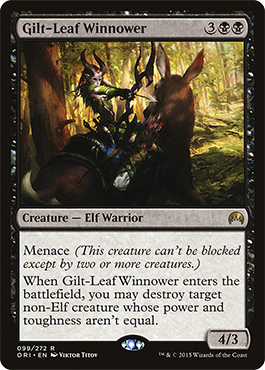
Played in .007% of Black Decks on EDHRec
Gilt-Leaf Winnower is an easy card to underrate. I think most of us have the same reaction when we first read the restrictions on its “enters” trigger – that seems too narrow! But it really isn’t. While creatures with symmetrical power and toughness are fairly common, most board states in Commander are going to have at least one great target for the Winnower to take down.
I’m definitely not saying every deck should be running this. In most ways, it is inferior to similar cards like Ravenous Chupacabra and Noxious Gearhulk. However, I think every elf deck should probably be packing a Gilt-Leaf Winnower, since they can get more out of its creature type and tutor it up in a variety of ways too.
Also, this card has a pretty neat flavor design. Lorwyn elves hate things that aren’t beautiful, and symmetry is often thought of as beautiful. So the fact that this can take down asymmetrical creatures is perfect.
SOULBLADE DJINN
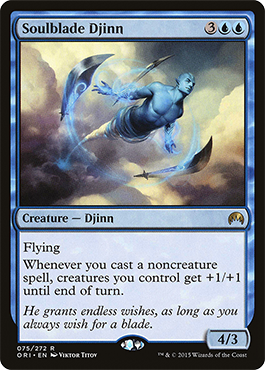
Played in .007% of Blue Decks on EDHRec
Soulblade Djinn’s stat-line is pretty rough. A 5-drop that dies to Lightning Bolt isn’t often where you want to be. But Soulblade Djinn is worth taking that risk for, since it has super prowess. In other words, it buffs your entire board each time you cast a noncreature spell. Even with a board that only consists of a few creatures, your opponent has to be worried when you have a handful of cards and the Djinn in play.
The Djinn is particularly good in decks that are interested in generating lots of creature tokens and casting noncreature spells. And there are two very popular Commanders that make a perfect home for Soulblade Djinn: Kykar, Wind’s Fury and Talrand, Sky Summoner.
Both of these Commanders generate creature tokens any time you cast spells, so you really don’t need to go out of your way to make the Djinn work alongside them. If you’re playing either of them, you’re likely to have a board filled with flying tokens that can threaten to do lethal damage on virtually any turn.
BOUNDING KRASIS

Played in .02% of Simic Decks on EDHREC
Bounding Krasis has a deceptively powerful “enters” trigger. You can of course use it to untap your creature to ambush-block something, something the Krasis is good at too thanks to Flash. Or you can use it to tap down a blocker at the end of your opponent’s turn so that you can attack them more effectively.
However, it’s the Krasis’s combo potential that is especially exciting. While not nearly as well known as Pestermite or Deceiver Exarch, the Krasis works just as well as they do alongside Splinter Twin and Kiki-Jiki. If you make a copy of the Krasis with either of those cards, you can use each copy to untap the enchanted creature or Kiki-Jiki, and make as many copies as you want. Then you have an infinite army of fish lizards that can attack everyone for lethal.
FOUNDRY OF THE CONSULS
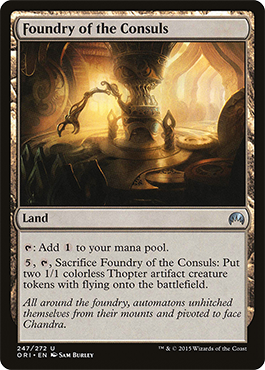
Played in .02% of Decks on EDHRec
Foundry of the Consuls certainly isn’t as exciting as the other cards on this list, but that doesn’t mean it isn’t good. Utility lands with abilities that impact the board are always more powerful than you expect, since they can simply give you mana for as long as you need them to. Eventually you reach a point where you don’t need the mana anymore and you need something to do with your turn, and the Foundry definitely delivers there. When you can get a real card of value out of a land like that, it almost feels like you’re getting a 2-for-1.
Obviously, it isn’t a utility land that every single deck wants, but if you’re using a Commander who is super into artifacts like Brudiclad or Urza, Lord High Artificer, you should probably find room for Foundry of the Consuls in your deck. Brudiclad and Urza are especially good with the Foundry, since they both like going wide with artifacts.
END STEP
Magic Origins is a really cool set. I hope Foundations does a good job of carrying on the legacy of powerful core sets. What do you hope we see in Foundations? Let me know over on X.

Jacob has been playing Magic for the better part of 24 years, and he especially loves playing Magic’s Limited formats. He also holds a PhD in history from the University of Oklahoma. In 2015, he started his YouTube channel, “Nizzahon Magic,” where he combines his interests with many videos covering Magic’s competitive history. When he’s not playing Magic or making Magic content, he can be found teaching college-level history courses or caring for a menagerie of pets with his wife.

